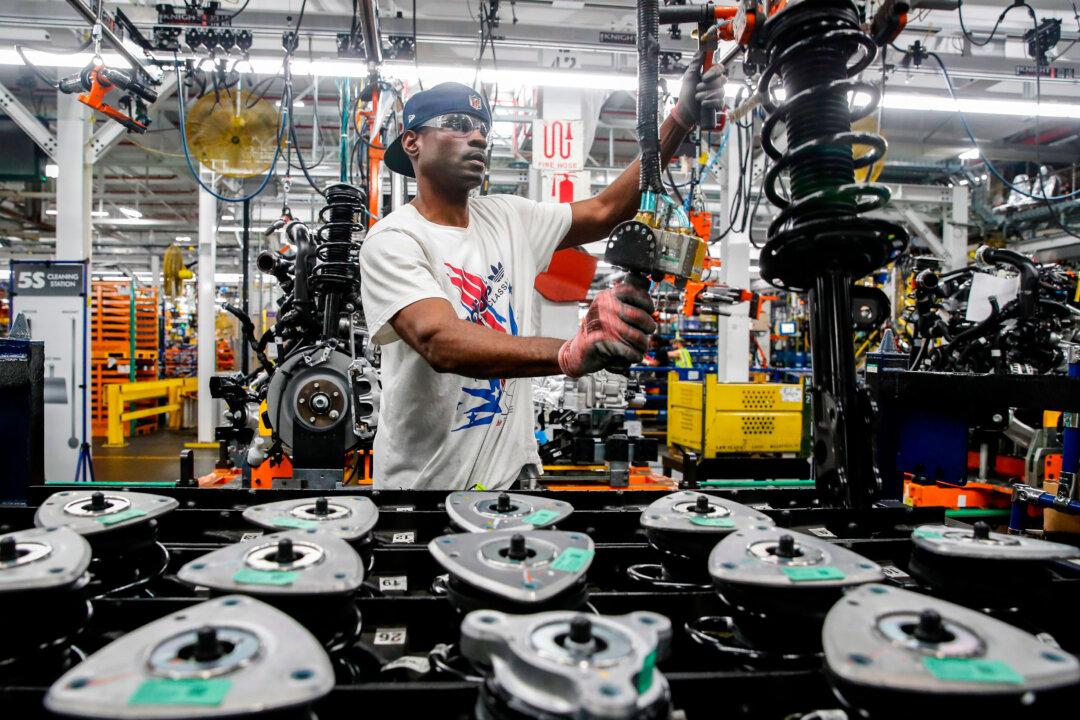America’s manufacturing sector saw its sharpest contraction in over a year in September even as overall business activity growth remained robust, according to new data from S&P Global, which also showed inflationary pressures reaccelerating.
The decline signals continued deterioration in business conditions within the manufacturing sector, which has been plagued by weakening demand and falling new orders. In particular, new orders in September fell at their fastest pace since December 2022, as manufacturers struggled with declining export demand and reduced domestic sales.
Slumping employment also made a significant negative contribution to the downbeat manufacturing figures, with job losses accelerating at a pace not seen since June 2020.
“Excluding the pandemic, the decline in factory jobs was the steepest since January 2010 as an increasing number of firms reported the need to reduce operating capacity in line with weak sales,” the S&P Global report states.
Cracks in the labor market were behind the Federal Reserve’s decision last week to deliver a large, 50-basis point interest rate cut, with one Fed official saying on Sept. 23 that he was surprised by the pace of deterioration in employment conditions.
The central bank’s rate-setting body, the Federal Open Market Committee (FOMC) of which Bostic is a voting member this year, decided last week to lower rates to within a range of 4.75–5.0 percent.
Markets are fully pricing in another rate cut when the policymaking panel meets again on Nov. 7, with the odds split roughly evenly between a smaller quarter-point cut or another jumbo half-point reduction.
But while central bank officials celebrate inflation falling closer to the Fed’s 2 percent target, Monday’s S&P Global data suggests it may be too soon to declare victory in the fight against high prices.
Inflationary pressures picked up across both goods and services, per the S&P Global report, with the increase driven mostly by rising input costs. Prices charged for goods and services rose at their fastest pace in six months, with service sector costs surging due to wage growth. Input costs in services grew at their highest rate in a year, reflecting increased labor expenses, while manufacturing input cost growth cooled slightly, aided by lower energy prices and fewer supply chain snags.
“The survey’s price gauges meanwhile serve as a warning that, despite the PMI indicating a further deterioration of the hiring trend in September, the FOMC may need to move cautiously in implementing further rate cuts,” Chris Williamson, chief business economist at S&P Global, said in a statement.
In contrast to a deepening slump in manufacturing, service sector activity grew at a solid pace in September, per the S&P Global report. The services business activity index came in at 55.4, a slight decline from August’s 55.7. Relatively robust growth in services helped lift the composite PMI measure—which combines both manufacturing and services—to 54.4 in September, a slight decline from the prior month.
“The early survey indicators for September point to an economy that continues to grow at a solid pace, albeit with a weakened manufacturing sector and intensifying political uncertainty acting as substantial headwinds,” Williamson wrote, while partly blaming election-related uncertainty for a sharp slump in optimism about business output in the year ahead.
The deterioration in output-related confidence sent the sentiment gauge to its lowest level since October 2022 and the second-lowest since the pandemic.







